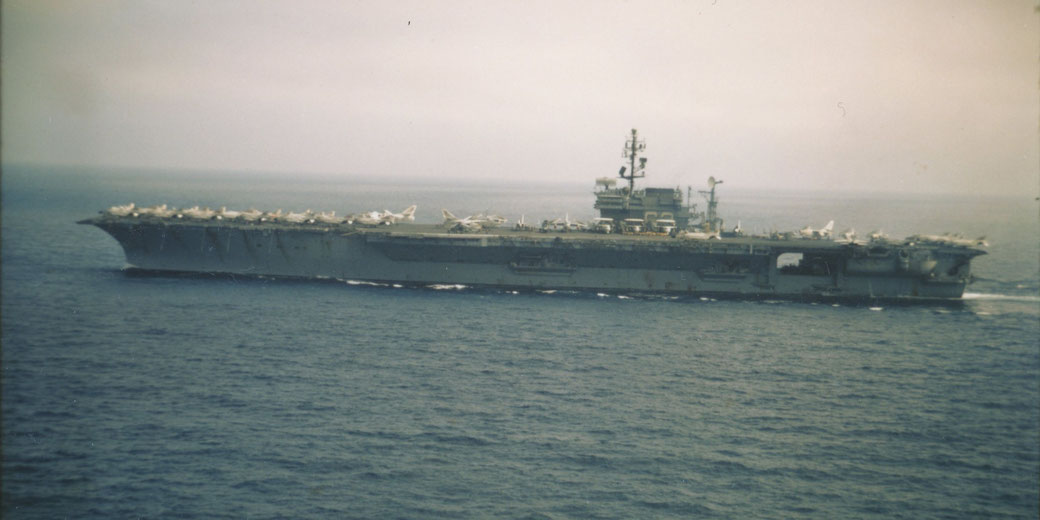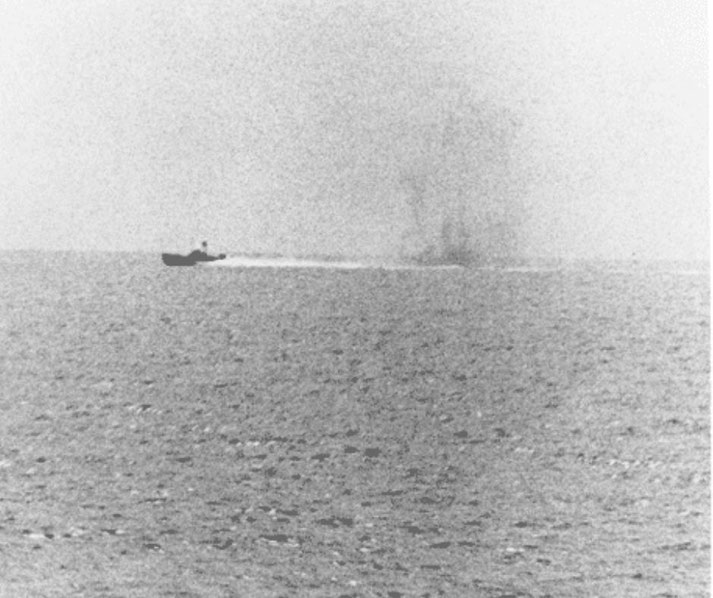The Gulf of Tonkin Incident: Did America lie to start a war?

On a seemingly ordinary day in August 1964, the waters of the Gulf of Tonkin near Vietnam became the backdrop for an incident that would dramatically escalate the Vietnam War and reshape U.S. foreign policy.
The Gulf of Tonkin Incident, involving alleged attacks on U.S. Navy destroyers by North Vietnamese torpedo boats, served as a catalyst for a significant increase in American military involvement in Vietnam.
This event set off a chain of decisions and actions that would have far-reaching consequences for both the United States and Vietnam, igniting a debate over the use of military force that continues to resonate today.
Why were American ships near Vietnam?
Before the Gulf of Tonkin Incident, the political and military landscape of Vietnam was caught in ideological tensions of the Cold War era between capitalism and communism.
Following the Geneva Accords of 1954, Vietnam was temporarily divided into North and South, with plans for reunification through elections in 1956.
However, these elections never took place, leading to the establishment of a communist government in the North led by Ho Chi Minh and a pro-Western government in the South under Ngo Dinh Diem.
The North sought to reunify the country under its leadership, supporting the Viet Cong, a South Vietnamese communist insurgency, in their efforts to overthrow the southern government.
The United States, concerned about the spread of communism in Southeast Asia, gradually increased its support for South Vietnam.
This support included military advisors, financial aid, and, eventually, direct military involvement.
By the early 1960s, the U.S. had become deeply involved in the conflict, seeking to contain the spread of communism and maintain a non-communist South Vietnam.
Tensions in the region escalated in the early 1960s as the conflict between North and South Vietnam intensified.
The U.S. Navy began conducting intelligence-gathering missions in the Gulf of Tonkin, off the coast of North Vietnam.
These missions, known as "DeSoto patrols," were intended to collect electronic intelligence on North Vietnamese military activities and communications.
What happened in the Gulf of Tonkin?
The Gulf of Tonkin Incident unfolded over two days in August 1964. On August 2, the USS Maddox, while conducting a DeSoto patrol in international waters, reported being attacked by three North Vietnamese torpedo boats.
The Maddox claimed that the boats launched torpedoes and opened fire with machine guns.
In response, the Maddox fired back with its own guns and called in air support from the nearby aircraft carrier USS Ticonderoga.
The skirmish resulted in damage to the North Vietnamese boats and minor damage to the Maddox.
Two days later, on August 4, the situation escalated further. The USS Maddox, joined by the USS Turner Joy, reported a second attack in the same waters.
The ships claimed to have detected torpedo signatures and engaged in a fierce battle with the unseen enemy, calling in further air support.
However, this second attack was later mired in controversy, with evidence suggesting that it may have been a false alarm, possibly triggered by bad weather and overeager radar operators.
How the US responded to the 'attacks'
Following the reported attacks on August 2 and 4, 1964, President Lyndon B. Johnson sought to demonstrate a strong stance against what was perceived as North Vietnamese aggression.
On August 4, even before the details of the second incident were fully confirmed, Johnson ordered retaliatory air strikes against North Vietnamese naval bases and oil storage facilities.
This marked the first time the U.S. had taken direct military action against North Vietnam.

In the immediate aftermath, President Johnson addressed the nation on television, informing the American public of the incidents and the U.S. response.
He framed the attacks as unprovoked aggression and emphasized the need to protect international waters and U.S. national interests.
The most significant consequence of the Gulf of Tonkin Incident was the passage of the Gulf of Tonkin Resolution by the U.S. Congress.
On August 7, 1964, just days after the incident, the resolution was passed with overwhelming support.
It authorized the president to take "all necessary measures to repel any armed attack against the forces of the United States and to prevent further aggression."
Effectively, this gave President Johnson broad authority to escalate U.S. military involvement in Vietnam without a formal declaration of war.
How the incident impacted the Vietnam War
As a result of the resolution, U.S. military presence in Vietnam rapidly escalated.
By the end of 1964, the number of U.S. troops in Vietnam had increased to over 23,000, up from around 16,000 earlier in the year.
This trend continued in the following years, with troop levels reaching approximately 184,000 by the end of 1965 and peaking at around 536,000 in 1968.
The escalation of U.S. involvement in Vietnam led to a more intensive and widespread conflict, with significant ground battles, air strikes, and naval operations.
The war also spread to neighboring countries, including Laos and Cambodia, as the U.S. sought to disrupt North Vietnamese supply lines and sanctuaries.
The increased U.S. military presence and operations in Vietnam had far-reaching consequences.
The war became increasingly unpopular in the United States, leading to widespread protests and a growing anti-war movement.
The conflict also had a devastating impact on Vietnam, causing immense human suffering, loss of life, and environmental damage.
Did the navy lie about the attacks?
Doubts about the accuracy of the reports of the second attack on August 4, 1964, began to emerge shortly after the incident.
Some officials and analysts questioned whether the attack had actually occurred, suggesting that it might have been a case of mistaken interpretation of radar signals or an overreaction to ambiguous or false information.
These doubts were further fueled by declassified documents and statements from former government officials, which revealed that the evidence for the second attack was far from conclusive.
In 2005, an internal National Security Agency (NSA) historical study was declassified, indicating that NSA analysts had deliberately distorted intelligence reports to support the claim of a second attack.
This revelation raised questions about the motives behind the escalation of the U.S. involvement in Vietnam and the role of intelligence in shaping foreign policy decisions.
Critics argue that the incident was used as a pretext for escalating the war, with significant consequences for both the United States and Vietnam.
The episode has also been cited as an example of the potential dangers of unchecked executive power and the importance of critical oversight and analysis in the use of military force.
What do you need help with?
Download ready-to-use digital learning resources
Copyright © History Skills 2014-2025.
Contact via email
With the exception of links to external sites, some historical sources and extracts from specific publications, all content on this website is copyrighted by History Skills. This content may not be copied, republished or redistributed without written permission from the website creator. Please use the Contact page to obtain relevant permission.





